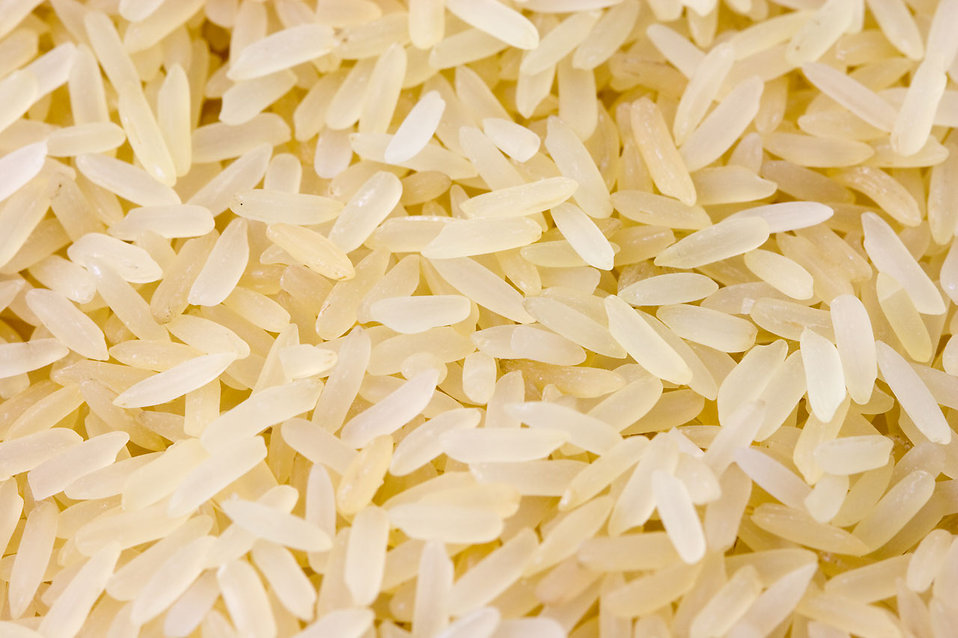The more colorful and expensive the kimono, the thinner the lips, the whiter the face – the more beautiful and desired the geisha. This understanding exists in the Japanese culture from the 18th century when women get the privilege to entertain the Emperor. This is when they began to practice the geisha profession.
To keep their skin beautiful, despite the pink and white foundation layers she applies on daily basis, the geisha washes her face with rice water. This century-old practice is becoming more and more popular today, and rice is involved in cosmetic products in a variety of forms.
Scrabs made of rice bran, rice flour masks, rice water toners, they can all be easily prepared at home and at affordable prices, without damaging the skin like chemically-derived ingredients, promoting a lighter complexion.
Cheap, yet effective
500 gr rice flour is enough for your beautifying masks during the next few months!

The rice flour is mixed with water until you obtain a thick paste, then apply the so-prepared mixture to the face and neck with slight massage movements and after about 15-20 minutes wash it off. Rice flour is made from milled rice (powdered), so even it can be prepared at home, by simply using a blender.
The water left after the rice is cooked can be also considered a finished cosmetic product. It is enough to boil some rice until completely cooked – it usually takes about 15-20 minutes, depending on the particular rice type you are using. Then leave it for another 10 minutes and separate the white and slightly dense liquid that remains on the surface.

Instead of throwing it, pour it into a bottle and wash your face with it every day or every other day. If you dilute it with some rose water, you get a completely natural homemade toner you can use to clean the skin with a cotton swab (perform the procedure every evening just before bedtime).
The rice water provides an additional benefit during the winter season. Those, suffering eczema (atopic dermatitis [1]) or cold allergies, affecting the skin on the hands and face can successfully eliminate the problem by applying rice water to the sensitive areas just before going out. Rice water also relieves the inflamed corners of the lips. This is due to the antioxidant activities and skin hydrating effects of rice [2].
According to the ancient Japanese, it also acts as a beneficial hair balm. It gives the hair a natural shine and makes it thicker and stronger. That’s why the Japanese women have long and glossy hair.
Benefits of rice
Rice contains a large amount of aminobenzoic acid, which provides a sun protection and is the main ingredient in SPF creams and lotions.
There are two other ingredients, playing an important role when it comes to skin regeneration – ferulic acid [4], which is proven to have strong antioxidant and anti-aging properties and allantoin [5] – a gentle, non-irritating, skin hydrating agent that helps exfoliate the outer layer of the epidermis and promotes new tissue formation.
Thanks to them, rice masks soothe the irritated skin, which is often associated with acne breakouts. It is also used for the removal of pigment spots, freckles, and acne scars, as it provides a lightening effect on the outermost skin layer making blemishes disappear. In India, people often use cooked rice (white) as a skin-healing ointment.
Nutritional value
Besides the skincare products that can be made of the pearl grains, rice also provides the skin with various nutrients.
That’s why Ayurvedic specialists recommended rice products for the high nutritional value they can provide after undergoing as little processing as possible before it reaches the consumer.
In the white rice, which is the most popular, the grain, the germ, and the pollen are removed. Still, white rice is among the super nutricious foods – it is rich in protein and fiber, free of cholesterol and harmful fat. The manganese in it is beneficial for the bones, nails, and skin, and strengthens the immune system.
Historical reference
Despite the long hours of work on the rice fields under the bright sun, women in Japan have always been famous for their porcelain skin- white, soft, smooth, and blemish-free.
Today scientists believe that this paradox is due to the fact that women working in the rice fields, used the water left after the rice was cooked as a facial cleanser, just like geishas did.
They transferred this tradition to their homes and even expanded it to the point that they even bathed in rice water. That is why rice is traditionally considered a universal source of beauty in Asian cultures.
References
- Efficacy of Fermented Rice Flour for the fix of Atopic Dermatitis
https://clinicaltrials.gov/ct2/show/NCT03157284 - Antioxidant activities and skin hydration effects of rice bran bioactive compounds entrapped in niosomes.
https://www.ncbi.nlm.nih.gov/pubmed/21449379 - What Is It: Ferulic Acid
https://www.truthinaging.com/review/what-is-it-ferulic-acid - Allantoin
https://www.truthinaging.com/ingredients/allantoin





Hi Monika,
Thank you very much for the tips. Will definitely try them. Being an Indian, there would be no shortage of rice water (soaked or cooked). But I just need to clarify one point. Do we use the water in which the rice was soaked for half an hour or so? Or do we use the water that is drained after the rice is cooked?
Also for using the rice powder. Should we make a thin / thick paste of it and apply it to the face? Or is the water (which is quite thick if rice powder is soaked for some time) better for applying?
I am a 44 years old male. I suffer from dark coloration (hyper pigmentation) neck above. Neck below, I have a pretty fair complexion. Two years back I suffered from a severe chicken pox, hence the skin has taken for the worst after that. This uneven skin tone does create a negative complex for me and I shy away from pics and group photos…:-(
Please advice.
Hi Uday,
Very glad you liked the recipes!
You don’t need to boil/cook the rice for the preparation of rice water. Just soak it for an hour and apply to the unevenly pigmented areas using a cotton swab. You don’t need to wash it – just let your skin absorb it.
About the rice flour, you do need to prepare a thick paste. Again, you don’t need to boil the rice flour. Add some water until you obtain a nice consistency and you can use it on your neck and your face. When washing your face, you will also exfoliate the dead skin cells and contaminants, which will gradually improve the overall complexion, while the rice compound will help you brighten those hyperpigmented areas you mentioned.
By the way, you can stay with the rice flour mask for as long as you wish.
The scarring will require a long fix period but if you are user and persistent enough, you’ll get the results desired! 🙂
Hope I was of some help!
Best of luck!
I already use the rice flour mask
It takes time but, if you are user you will see results I’m not sure if I’m using the right rice
I like using the normal non organic long grain white rice but, I was told it’s best to use organic rice I can’t find long grain organic rice only Basmati would you please let me know your opinion on this?
Thanks
Hi Katrien!
You can use the same rice you use for cooking. It is up to you to decide whether you are using organic or non-organic.asmati rice seems perfectly fine.
Hope I helped!
Hi my name isRaghavendran it’s really nice idea thanks for sharing. I want to know i have a beard if i apply this rice flour to my face means it will affect the beard or not. Please help me me Ms. Monika.
Cheers,
Raghavendran Jayaraman
Hi, Raghavendran!
There’s no need to worry about your beard – the rice flour mask won’t change its’ color. It will improve its’ appearance tho 🙂
Hope you’ll like it!
Does exfoliating on daily basis not stop the oil content of the skin and make it dry? Or is it essential to use the rice flour paste once a week only?
Hi Vinu,
There is no need to exfoliate your skin on a daily basis, whatever the ingredients you are using. Over exfoliating can damage the skin and make your sebaceous glands produce more oil.
Rice is rich in antioxidants and nutrients, which are indeed beneficial for your skin skincare but exfoliating every day may result in increased sensitivity and irritation. The best option is to perform facial exfoliation 2 times a week – this way you can get the optimal effect
Thank you for the info on rice water for a facial toner.cant wait to try it.
I have very oily skin can I use it
Yes, you can. It can even improve oily skin.